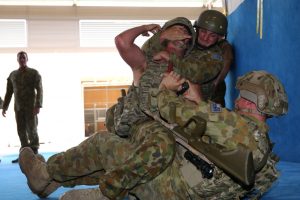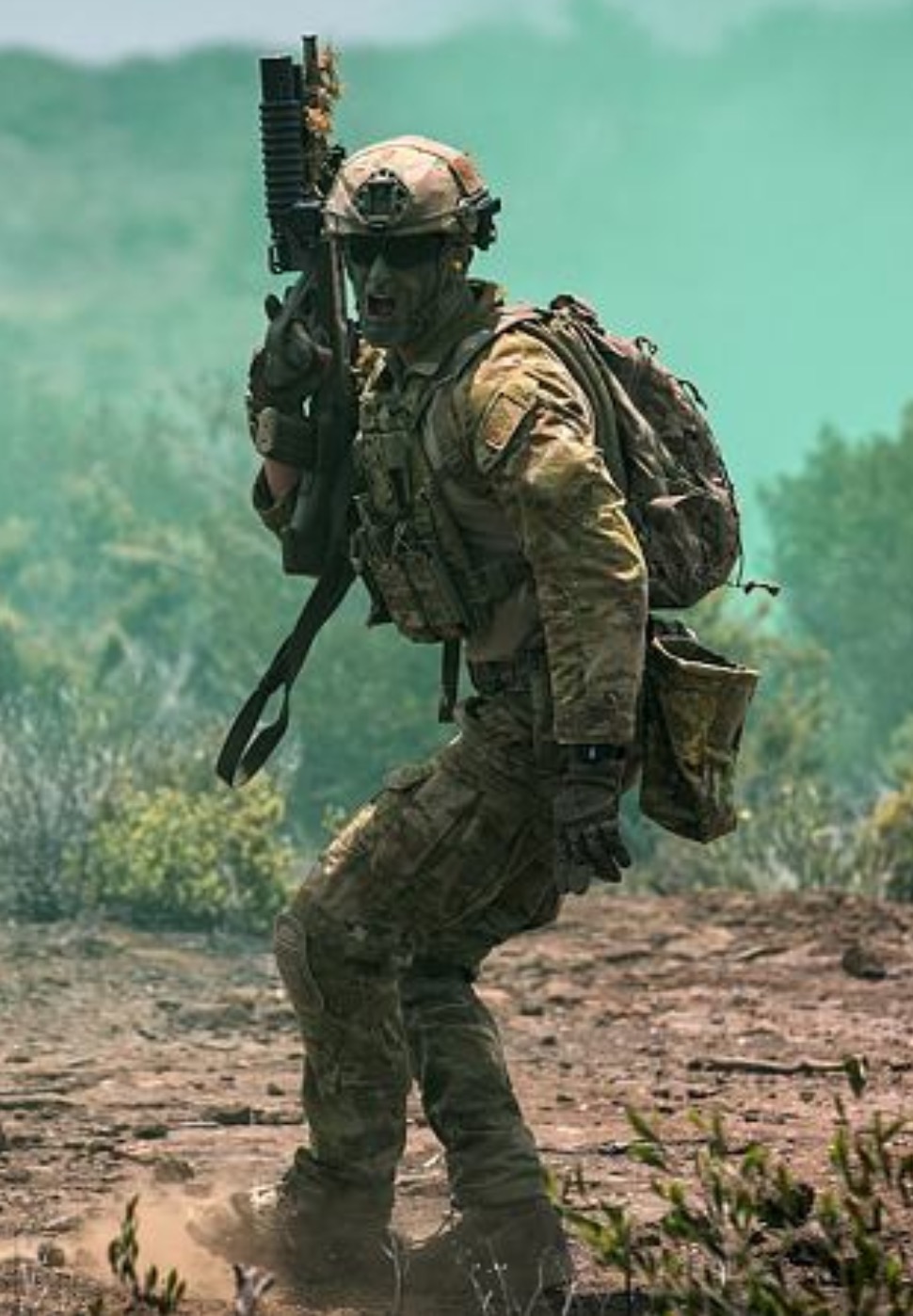The technology used to fight wars has changed dramatically over the last century. While the modern soldier has access to numerous technologically advanced tools to help fight these wars, there is one aspect of war that has not and will not change – hand to hand combat. This has raised the question about the relevance of current in-service unarmed and hand to hand combat training and its availability to all Army personnel.
Australian soldiers are not immune to unarmed combat. In Afghanistan in 2007, a special forces sergeant strangled a Taliban commander using unarmed combat techniques after his platoon was ambushed while on a mission in the Chora region. A life-long martial artist, he then used this experience to further develop the Special Forces Close-Quarter Fighting (SF CQF) course which, according to his former platoon commander, 'has proven to be instrumental for commandos in using both lethal and non-lethal force while engaged in room combat'.
Whilst this is just one example of where an Australian soldier has resorted to close combat to subdue an enemy in recent times, Army’s Director General of Training and Doctrine, Brigadier Mick Ryan has acknowledged that 'hand to hand fighting is far from a thing of the past and the need for Army personnel to defend themselves and potentially subdue an opponent can appear unexpectedly'. Army News 27 Jul 17 (p23) This has led to a critical re-think of the current unarmed combat course offered by Army - the Military Self Defence (MSD) course. Whilst hotly requested in the early 2000’s, demand has fallen significantly with only three learning management package (LMP) requests in the previous 2 years (which were used to deliver physical training instructor course competencies).
Army Combatives Program (ACP)
As part of a new approach to integrated combat, Army will introduce a suite of hand to hand combat courses over the next 12 months. Featuring common techniques, the new Army Combatives Program (ACP) is based on the current SF CQF course and the Infantry Integrated Combat (IIC) course. The ACP will enhance individual and collective combat skills, and it is intended that all Army personnel will receive some level of the training in the near future.
The ACP is not a ‘martial art’ or solely concerned with self-defence: it is combat-focused and will teach lethal and non-lethal techniques relevant to soldiers. Together with the new combat marksmanship practices, it will support the development of a combat mindset (a state of mind that prepares soldiers to kill the enemy, survive, then continue the fight). The program will consist of four levels of training that gradually increase in skills requirement.

Combatives 1 (ACP-1)– Survive a physical encounter and retain the weapon.
This has been designed as an all-corps skill and will be integrated into ab initio training throughout 2018. ACP is a one-day course and will consist of foundation techniques common to more advanced levels of the program. It is aimed at teaching personnel how to survive a physical encounter and retain their weapon. It will provide simple, easy to maintain and, most importantly, useful techniques relevant to all Army soldiers. ACP 1 will be mandatory for all personnel in Army.
Combatives 2 (ACP2)– Apply lethal and non-lethal techniques in an operational environment.
This level is designed for any-corps. It could be conducted as unit training or may be required as part of Operational Generation (OPGEN) training for some deployments. Level two will include lethal and non-lethal techniques and will replace the MSD course.
Combatives 3 (ACP3)– Apply lethal and non-lethal Infantry Integrated Combat (IIC) techniques as part of an infantry section. ACP3 (IIC) will continue to be taught at the School of Infantry (SOI) and will remain infantry specific to support their role of closing with the enemy.
Combatives 4 (ACP4)– Apply lethal and non-lethal techniques as part of a Special Forces (SF) team, known as Special Forces Close Quarter fighting (SF CQF). SF CQF will continue to be taught as part of the respective SF reinforcement cycles.
Whilst the new ACP framework is designed to be combat focused, contain common material and leverage existing courses, there are a number of other advantages: a simplified instructor qualification where those already qualified as exponents or instructors under either SF CQF or IIC will have their qualifications recognised on PMKeys as part of the new program and there will also be no need for ongoing re-certification requirements (although refresher training is encouraged and will be at unit discretion).
ACP gap training courses will be conducted in Darwin, Townsville and Brisbane in the latter half of 2017. Gap training for Canberra, Sydney, Adelaide and Wagga Wagga will occur in the first half of 2018. Commencing mid-2018, ACP 1 will be introduced at ab-initio training institutions.
The ACP is an opportunity for Army to contemporise, simplify and make relevant, hand to hand combat techniques. All Army personnel will benefit from this training and will, at a minimum, be in a better position to survive a physical encounter with the enemy and retain their weapon. The program will also contribute to the development of a combat mindset which will prepare soldiers for war and maximise their lethality and survivability on the battlefield.











you definately up deserve a thumbs!